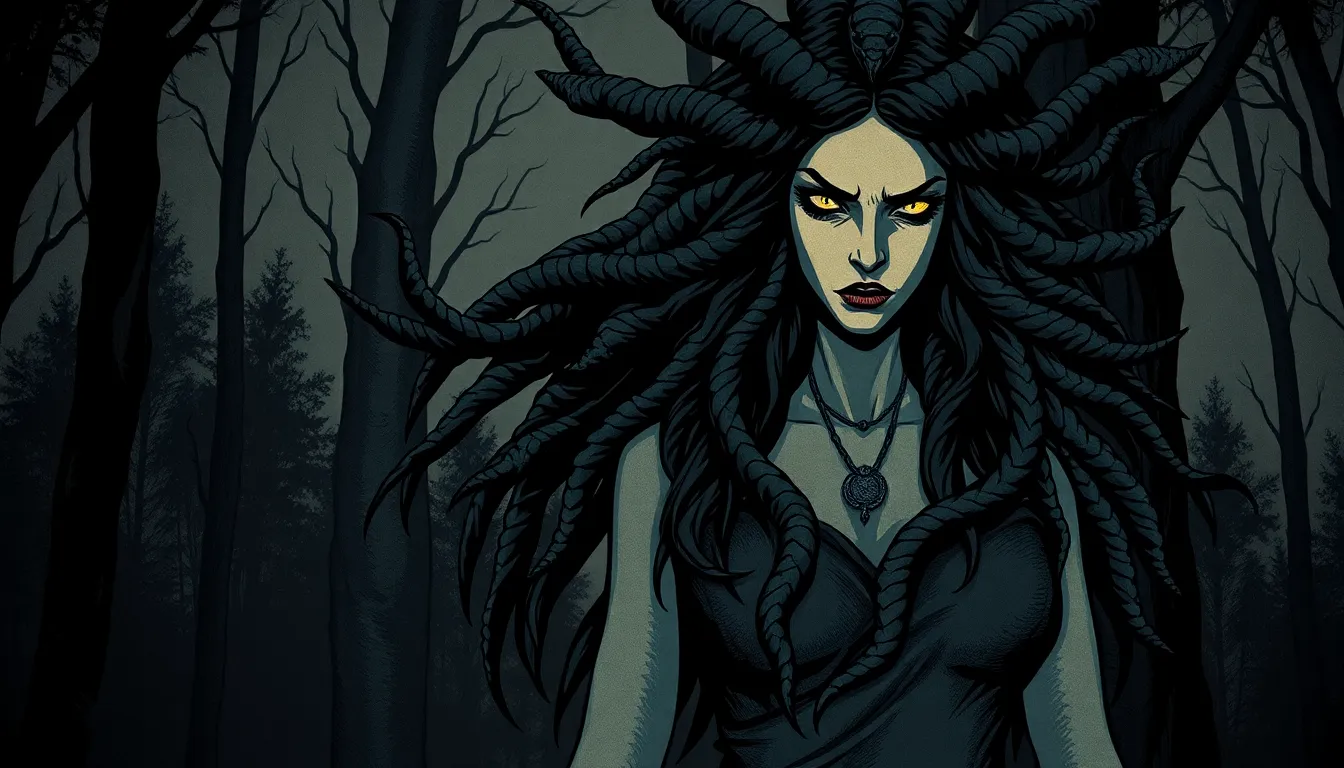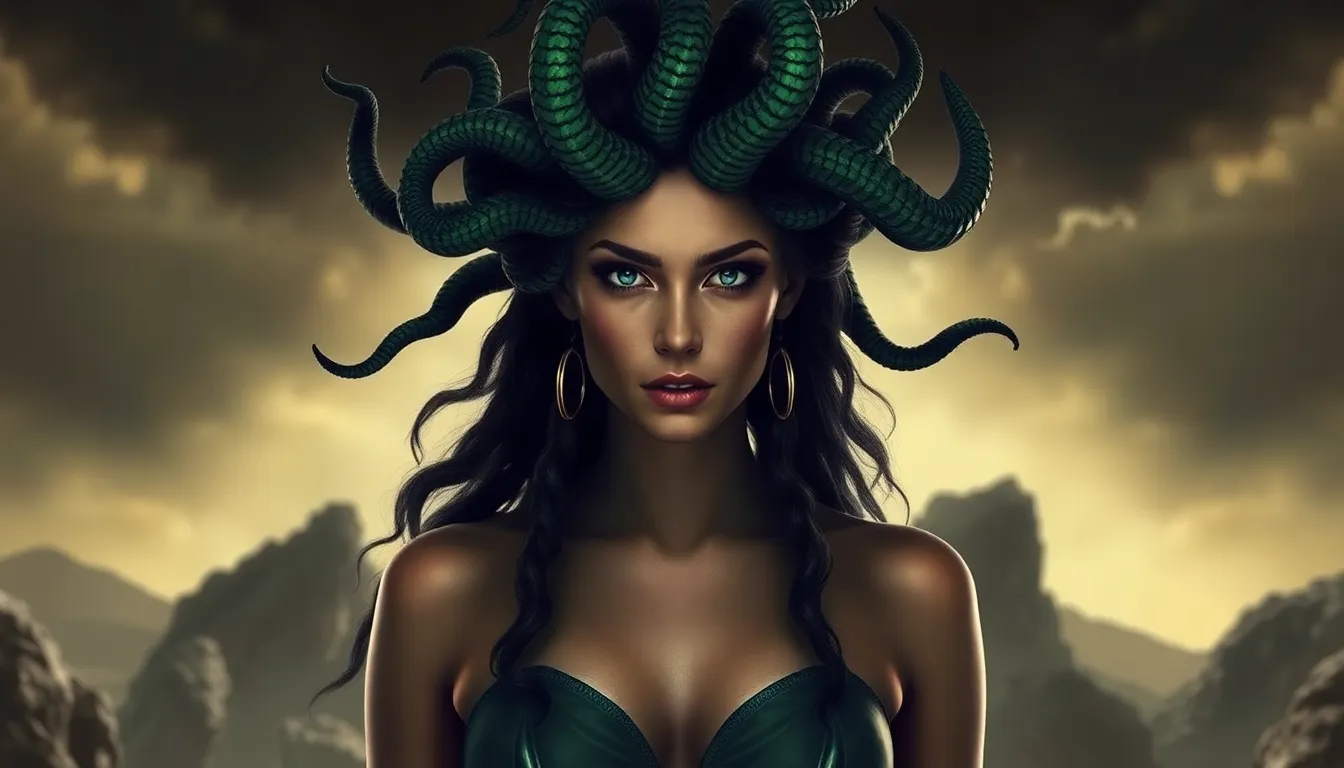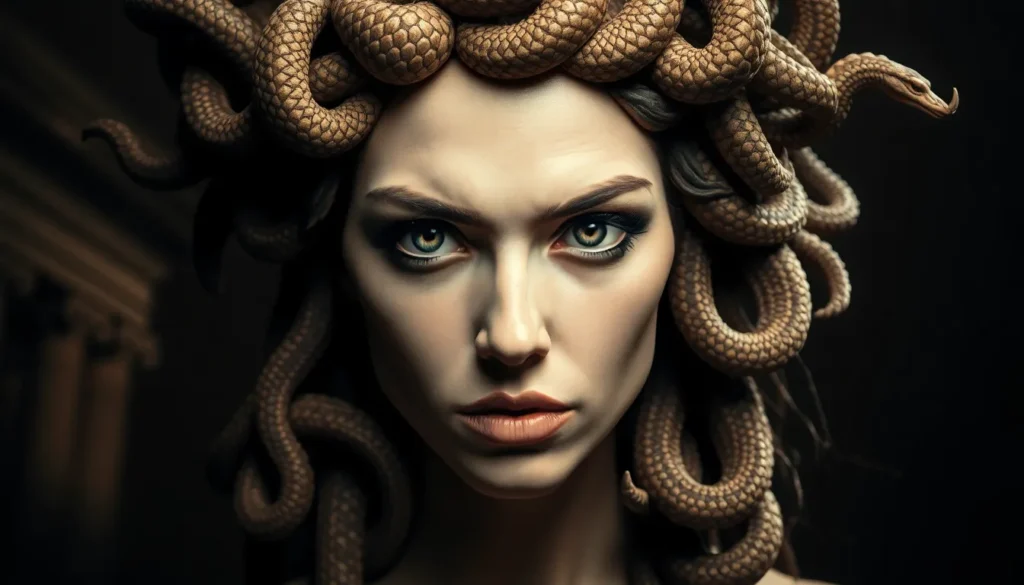Table of Contents
ToggleMedusa isn’t your typical deity. With snakes for hair and a gaze that could turn anyone to stone, she’s the ultimate mythological figure that commands attention and sparks curiosity. But what exactly is she the god of? While many think of her as a monster, the truth is far more fascinating.
Overview of Medusa
Medusa represents a complex figure in Greek mythology, renowned for her distinct features and powers. As one of the Gorgon sisters, she stands out with her striking appearance, characterized by snakes that replace her hair. Her gaze holds the ability to turn onlookers into stone, a talent that evokes both fear and fascination.
In mythology, she symbolizes transformation. Once a beautiful maiden, her metamorphosis into a Gorgon stems from a curse inflicted by Athena, the goddess of wisdom. This depth enriches her character beyond the monstrous exterior, highlighting themes of power and vulnerability.
Medusa’s narrative intertwines with significant mythological figures, particularly Perseus. This hero’s quest to behead her integrates themes of bravery and the battle against darkness. Several interpretations exist regarding her status as a protector or victim, prompting ongoing discussion among scholars and enthusiasts alike.
Cultural depictions of Medusa extend beyond ancient texts. Artists have embraced her image across various mediums, reflecting her enduring impact on literature, art, and popular culture. In contemporary society, she often symbolizes female empowerment, challenging conventional narratives surrounding beauty and monstrosity.
Her story invites reflection on deeper themes like justice, revenge, and the consequences of jealousy. Through these elements, Medusa transcends her identity as merely a monster, embodying a multifaceted symbol in mythology that resonates through time.
Medusa’s Mythological Background


Medusa’s story encompasses layers of significance within Greek mythology. Heavily involved in Greek lore, Medusa stands out for her unique portrayal as both victim and monster.
Origins in Greek Mythology
Medusa’s origins trace back to ancient storytelling. She was one of the three Gorgon sisters, born to the sea deities Phorcys and Ceto. Distinctions among the sisters defined their narratives; unlike her immortal counterparts, Medusa was mortal. Ancient texts often highlight her beauty and allure, making her fate all the more tragic. She captured the attention of many, which turned her story into a poignant reflection on desire and consequence. Writers across various periods shaped her image, ensuring her presence in mythological tradition.
Transformation into a Gorgon
Medusa’s transformation into a Gorgon holds immense narrative weight. Cursed by Athena, her transformation emphasized themes of punishment and despair. This curse turned her beautiful hair into venomous snakes, representing both a loss of identity and empowerment. With each glance, she could petrify anyone who approached her. Often viewed as a metaphor for anger and betrayal, the change forced her into isolation, highlighting the profound struggles she faced. Through this transformation, Medusa’s tale symbolized broader themes of power dynamics and the complexities of fate in myth.
Symbols and Attributes of Medusa
Medusa embodies several powerful symbols and attributes in Greek mythology. Her features carry deep significance, reflecting her complex identity and narrative.
Significance of Her Hair
Her hair, transformed into venomous snakes, symbolizes betrayal and loss. Once a symbol of beauty, her hair now acts as a weapon. Those who gaze upon her are petrified, illustrating her power and the consequences of Athena’s curse. This transformation conveys themes of identity and empowerment, challenging perceptions of femininity. Moreover, snakes often represent wisdom and rebirth in various cultures, adding layers to her symbolism. They capture the duality of Medusa, portraying both danger and allure.
Powers and Abilities
Medusa possesses unique powers that set her apart from others. Not only does she turn individuals to stone, but she also wields immense influence over life and death. Her gaze serves as a defense mechanism, protecting her from her enemies. Additionally, she holds an immortal legacy as part of the Gorgon lineage, even though she herself is mortal. Medusa’s power highlights the complexity of her character, reflecting vulnerability alongside formidable strength. The combination of her abilities contributes to her enduring relevance in mythology, inviting interpretations that span generations.
Medusa in Art and Culture
Medusa’s presence permeates both ancient and modern artistic expressions, emphasizing her multifaceted identity within various cultural contexts.
Representations in Ancient Art
Ancient art vividly depicts Medusa in different forms. Sculptures and pottery often showcase her with serpent hair, conveying both beauty and horror. Vases from the 6th century BCE feature her image, illustrating her significance in mythology. Additionally, coins from ancient Greek cities, like Corinth, represent her as a protective emblem. These representations reveal how Medusa served as a symbol of power and protection. Her visage appeared prominently in the decorative arts, symbolizing the duality of fear and protection in ancient beliefs.
Modern Adaptations
Modern adaptations reinterpret Medusa for contemporary audiences. Artists frequently explore themes of feminism and empowerment through her story. Films and literature portray her as a complex figure, highlighting her injustices and struggles. Graphic novels and fashion often embrace her image, signifying strength and resilience. Furthermore, Medusa’s character appears in various forms of media, from video games to fashion runways, showcasing her ongoing influence. Through these adaptations, she transforms from a mere monster into a symbol of defiance against societal norms.





